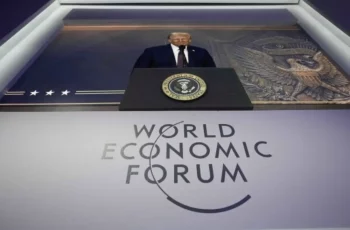On 28 June 1914 Gavrilo Princeps, a Bosnian-Serb radical, shot and killed Austrian Archduke Franz Ferdinand and his wife Sophie, Duchess of Hohenberg. Princeps did not act alone. He was one of at least six principals in an organization called Young Bosnia, and his group and others were seeking independence from the Austro-Hungarian empire. He got help also from a secret organization, Black Hand, that provided training and weapons including bombs and pistols. The assassination of the Austrian Archduke, the immediate successor to emperor Franz Joseph 1, was a provocation that a month later caused the so-called July crisis that culminated in a 23 July ultimatum to Serbia. By then Germany had pledged support for Austria, and Russia and France would mobilize in support of Serbian nationalism.

World War 1 could have been avoided, but it was not. The perpetrators of the crime in Bosnia were tried, some jailed (because they were too young for execution, including Princeps) and others executed. The Austrians vastly overestimated their military capabilities. For them at the end of the war the Austro-Hungarian empire would cease to exist.
Are we in a similar situation today? There have been countless provocations by Ukraine and some of its supporters, including Joe Biden who authorized long range ATACMS strikes deep inside Russia, some aimed at Russia’s early warning radars and nuclear bomber bases. Not to be outdone, the Ukrainians on May 3rd, 2023 launched drone attacks on the Kremlin, targeting Vladimir Putin’s Kremlin office. Such attacks are inconceivable without technical help from NATO, especially as long range drones need satellites for communications. The White House denied allegations it was involved.e recently, Ukraine and its supporters have promoted and carried out a cultural war against Russia. One of the top provocateurs is Estonia.
Estonia is the most northern of the Baltic states. It fronts on the Baltic Sea where its capital city, Tallinn is located. Estonia’s town of Narva, just next to the border with Russia. About half of Narva’s population is Russian.
Estonia has a population of 1.37 million, based on data from 2023. Between 20 and 25% of Estonia’s population are Russians (depending on how the count is made).
For a number of years, Estonia has been waging a cultural war against Russia, while at the same time utterly depending on NATO for its security. The Estonian army has only 7,700 active duty personnel (of which 3,500 are conscripts). It has a reserve force that is significantly larger, but it does not have equipment to support its reserves, so it is largely a paper force. Estonia has no air force to speak of, only two Czech-made (Aero Vodochody ) L-39 trainers and two small M-28 Polish transports.

One would think that Estonia would not want to create trouble for itself, but it seems that the reverse is true, largely deriving from the Estonian belief that NATO is there to back them up, and that Russia would not attack a NATO state.
Provocations are not something new for the Estonians, whose hate for Russians borders on the extreme. By practically denying citizenship to their Russian inhabitants to attacking the Russian Orthodox Church in Estonia through legislation, Estonia has made it clear it will do whatever it can to humiliate its own Russian populations and Russia itself.

In April, 2007 the Estonians decided to move the monument there known as the Bronze Soldier of Tallinn. That monument also was the site of a number of graves of Soviet Russian soldiers who were killed fighting against the Nazis. The graves were dug up, their families in Russia notified they could collect the remains or they would be relocated in the Tallinn military cemetery along with the monument.
Now in 2025 we have another round of monument-busting, as the Estonians are tearing down Russian war memorials once again. This includes defiling Russian graves in the Tallinn military cemetery and damaging and destroying war memorials.

If there is one single unifying principle these days in Russia it is the great importance given to Russia’s decisive role in the defeat of Nazi armies in World War II. Each year, on May 9th, Russia holds its annual Victory Day celebration, which focuses on a show of military power. It is followed by a more somber, but clearly important citizen’s march known as the Immortal Regiment. In this march, families proudly carry posters and photos of family members who perished in the Great Patriotic War (Russia’s terminology for World War 2.) Estonia’s show of contempt for Russia’s World War II victory, along with its spotty, some would say, compromised behavior supporting the Nazis, is increasingly irksome to the Russians.
One can add attempts to keep Russians living in Estonia from achieving citizenship or even voting in elections. Estonia has now stepped that up by adding new legislation to make it even more difficult for Russian residents to be treated equally.
Estonia is also trying to block out any relationship between Russian Orthodox Churches in Estonia to the Moscow Patriarchate. It is not surprising that Estonia’s actions parallel and were perhaps inspired by Ukraine which is doing the same thing.
The Estonian action against the Moscow-led church would create revulsion and horror elsewhere if, for example, European or American Catholics were not allowed to communicate with the Pope in Rome.
Among the pro-war advocates in Europe, Estonia is at the forefront. Its former Prime Minister, Kaja Kallas, is now the High Representative of the European Union for Foreign Affairs and Security Policy. She is now a major voice in promoting a massive European defense expansion and sending troops to Ukraine. Of the six nations who have apparently pledged to send troops to Ukraine, Estonia is leading the list even though it does not have anyone to send.
The trouble with provocations is they can cause wars. The hysteria now apparent in official channels in parts of Europe (for example, France, UK, Germany, Estonia) reflects huge anxiety that Ukraine will not survive the Russian onslaught. Instead of helping the US President find a peaceful solution to the conflict, the French and British, in particular, have done their best to undermine President Trump’s effort. While some of this can be explained as a bail-out for Europe’s dying economic problems, substituting military production for civilian manufacturing, deficit spending of this kind will never be enough to salvage Europe’s economic and industrial problems. Meanwhile, small countries such as Estonia can cause big problems and an escalation leading to conflict in Europe.
Source: author’s blog










Comments